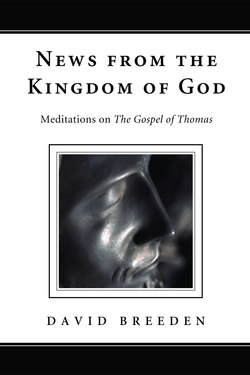Читать книгу News from the Kingdom of God - David Breeden - Страница 9
На сайте Литреса книга снята с продажи.
The Text
ОглавлениеScholars had long known of The Gospel of Thomas, though a relatively complete copy of it was not discovered until 1945. Unlike the canonized Gospels of Matthew, Mark, Luke, and John, The Gospel of Thomas contains no bios, biography. It consists, rather, of sayings or teachings of Jesus, some familiar from the Gospels, some with additions or deletions from the Gospel versions, some unknown before. Readers familiar with the canonical Gospels will be immediately struck by the similarities of many of these sayings and parables with those in other Gospels. This can be explained by one of three theories: that they are older than—and perhaps a source for—the sayings and parables that appear in the other Gospels; that they occurred in a parallel tradition that interacted little with the canonical material; or that they are derived from the Gospels for another (perhaps gnostic) purpose. What we know for sure is that the early Christian movement contained disparate and geographically dispersed traditions concerning the meaning of the life, the death, and the teachings of Jesus.
As in the case of the canonical Gospels, The Gospel of Thomas claims authorship by a noted historical personality, in this case Didymos Judas Thomas, one of the twelve followers, perhaps most famous as “Doubting Thomas.” Didymos is Greek, meaning “twin.” “Thomas” means “twin” in Aramaic. By tradition, Thomas was a brother of Jesus, though not necessarily the twin of Jesus. Also by tradition Thomas was the only one of the Twelve to leave the Roman Empire during his ministry, traveling to Syria, Persia, and ultimately India.
The Gospel of Thomas appears to have been originally written in Greek and later translated into Coptic. The Coptic text is the basis for this translation. It should be noted that the order of the sayings does not appear to reflect any progression of ideas toward a conclusion.
As mentioned previously, much debate circles around the composition date of The Gospel of Thomas. The text could be very early, perhaps even one of the sources for the Gospel According to Mark, earliest of the canonical Gospels. Or it could be later, about the turn of the second century, perhaps contemporaneous with the Gospel According to John, last written of the canonical Gospels. The date of composition makes a great deal of difference in how to understand the text. Based on a later dating of the text, The Gospel of Thomas has been labeled “gnostic,” part of a mystical branch of Christianity later considered heretical. If it is earlier, however, predating the gnostic movement, it may contain the record of a non-Platonic mystical tradition dating to the teachings of Jesus himself. This is the assumption I have worked from in the following translation.
The controversy over the dating of the text may never be resolved. There is no doubt, however, that The Gospel of Thomas is fascinating as a study in mystical, non-dual thinking, a “wisdom way” that did not enter the Western consciousness again until the discovery of Eastern thought many centuries later.
